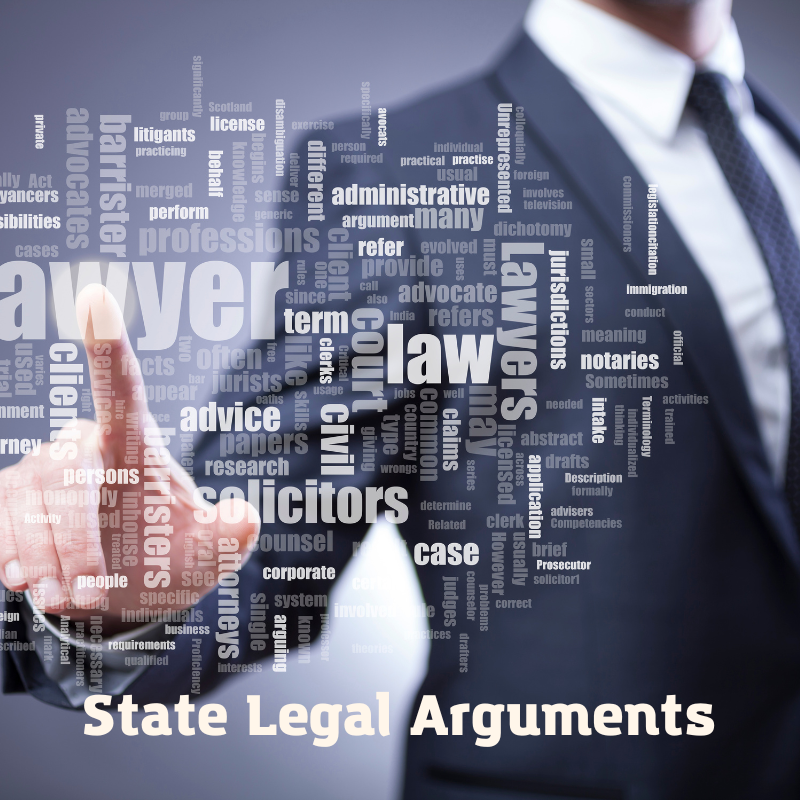
B.L.U.F. The “new” argument from the state.
In June 2008, the Supreme Court issued their first Second Amendment ruling in nearly 80 years. They were asked …whether a District of Columbia prohibition on the possession of usable handguns in the home violates the Second Amendment to the Constitution.
—District of Columbia v. Heller, 467 U.S. 837, 2788 (2008) The District of Columbia generally prohibited the possession of handguns.
The law was set up such that each of the pieces was individually “acceptable” before the Court’s opinion. There was a law making it a crime to carry an unregistered firearm. Then the limits on who could register a handgun were such that almost nobody was ever allowed to register a firearm.
Before addressing the verbs “keep” and “bear,” we interpret their object: “Arms.” The 18th-century meaning is no different from the meaning today. The 1773 edition of Samuel Johnson’s dictionary defined “arms” as “weapons of offence, or armour of defence.” 1 Dictionary of the English Language 107 (4th ed.) (hereinafter Johnson). Timothy Cunningham’s important 1771 legal dictionary defined “arms” as “any thing that a man wears for his defence, or takes into his hands, or useth in wrath to cast at or strike another.” 1 A New and Complete Law Dictionary (1771); see also N. Webster, American Dictionary of the English Language (1828) (reprinted 1989) (hereinafter Webster) (similar).
—id. at 2791
This defines what an “arm” is. The Heller Court went on to say:
The term was applied, then as now, to weapons that were not specifically designed for military use and were not employed in a military capacity. For instance, Cunningham’s legal dictionary gave as an example of usage: “Servants and labourers shall use bows and arrows on Sundays, & c. and not bear other arms.” See also, e.g., An Act for the trial of Negroes, 1797 Del. Laws ch. XIII, § 6, p. 104, in 1 First Laws of the State of Delaware 102, 104 (J. Cushing ed.1981 (pt. 1)); see generally State v. Duke, 42 Tex. 455, 458 (1874) (citing decisions of state courts construing “arms”). Although one founding-era thesaurus limited “arms” (as opposed to “weapons”) to “instruments of offence generally made use of in war,” even that source stated that all firearms constituted “arms.” 1 J. Trusler, The Distinction Between Words Esteemed Synonymous in the English Language 37 (1794) (emphasis added).
—id.
This says that arms protected by the Second Amendment include both those “most useful for military/militia use” and those arms which are not. If it is an arm, it is protected by the Second Amendment.
From this place, the court then put limits on the arms that are protected by the Second Amendment. These were dangerous and unusual arms and NFA items. The NFA is not mentioned by name.
The court was exceptionally clear regarding “muskets are the only arms protected by the Second Amendment”. Some have made the argument, bordering on the frivolous, that only those arms in existence in the 18th century are protected by the Second Amendment. We do not interpret constitutional rights that way.…
—id.
We reach the question, then: Does the preface fit with an operative clause that creates an individual right to keep and bear arms? It fits perfectly, once one knows the history that the founding generation knew and that we have described above. That history showed that the way tyrants had eliminated a militia consisting of all the able-bodied men was not by banning the militia but simply by taking away the people’s arms, enabling a select militia or standing army to suppress political opponents. This is what had occurred in England that prompted codification of the right to have arms in the English Bill of Rights.
—id. at 2801
Yeah, it is an individual right.
Here is the crux of the post Heller battle for gun rights:
We also recognize another important limitation on the right to keep and carry arms. Miller said, as we have explained, that the sorts of weapons protected were those “in common use at the time.” 307 U.S., at 179, 59 S. Ct. 816. We think that limitation is fairly supported by the historical tradition of prohibiting the carrying of “dangerous and unusual weapons.” See 4 Blackstone 148-149 (1769); 3 B. Wilson, Works of the Honourable James Wilson 79 (1804); J. Dunlap, The New-York Justice 8 (1815); C. Humphreys, A Compendium of the Common Law in Force in Kentucky 482 (1822); 1 W. Russell, A Treatise on Crimes and Indictable Misdemeanors 271-272 (1831); H. Stephen, Summary of the Criminal Law 48 (1840); E. Lewis, An Abridgment of the Criminal Law of the United States 64 (1847); F. Wharton, A Treatise on the Criminal Law of the United States 726 (1852). See also State v. Langford, 10 N.C. 381, 383-384 (1824); O’Neill v. State, 16 Ala. 65, 67 (1849); English v. State, 35 Tex. 473, 476 (1871); State v. Lanier, 71 N.C. 288, 289 (1874).
—id. at 2817
This is what every infringing legislature hangs their argument on. This is the hook that will allow their particular infringement to slip past the protections of the Second Amendment. Unfortunately, Heller went on to say “text, history, and tradition” are the actual methods of judging a regulation.
I often wonder how the anti-gun people get their marching orders so quickly. And why they are so lock step with one another. I just found one of the reasons:
Justice BREYER moves on to make a broad jurisprudential point: He criticizes us for declining to establish a level of scrutiny for evaluating Second Amendment restrictions. He proposes, explicitly at least, none of the traditionally expressed levels (strict scrutiny, intermediate scrutiny, rational basis), but rather a judge-empowering “interest-balancing inquiry” that “asks whether the statute burdens a protected interest in a way or to an extent that is out of proportion to the statute’s salutary effects upon other important governmental interests.” Post, at 2852. After an exhaustive discussion of the arguments for and against gun control, Justice BREYER arrives at his interest-balanced answer: because handgun violence is a problem because the law is limited to an urban area, and because there were somewhat similar restrictions in the founding period (a false proposition that we have already discussed), the interest-balancing inquiry results in the constitutionality of the handgun ban. QED.
—id. at 2821
This is the Heller court rejecting means-end balancing. Means-end balancing comes from the dissenting opinions. In other words, from the argument that lost.
Bruen reaffirmed Heller and put a stop to means-end. This reduced the process of analyzing a Second Amendment challenge to a regulation to the following steps:
Does the challenged regulation implicate the scope of the Second Amendment? If it does not implicate the scope of the Second Amendment, the challenge loses.
Is the regulation a ban? If the regulation is a ban, are the arms banned in common use for lawful purposes? If the answer is yes, then the ban is unconstitutional.
If the regulation is not a ban, but does implicate the scope of the Second Amendment, the burden shifts to the state to prove a history and tradition of analogous regulations.
The state argues that their infringement does not implicate the Second Amendment. That is easily overcome.
The state argues that their infringement does not implicate an arm. Here, the state attempts to place the burden on the plaintiffs to prove that the item(s) in question are, indeed, arms.
If the infringement is a ban, the state then argues that the arm is not “in common use”. They try to limit the definition of “use” by putting qualifiers, “for self-defense” being the most commonly used manipulation.
The new argument
evidence in the record before this Court. Their showing is marked by argument without citations and sources showing that their argument would be supported by admissible evidence, even under the relaxed rules for preliminary injunctions. It is wholly unclear whether
all of the weapons (like conversion kits or semiautomatic pistols) regulated by HB 1240 are “in common use” based on the Plaintiffs’ scant submission. The Plaintiffs have not made “a clear showing” of evidence (Winter at 22) that supports their contention that all of the weapons covered by HB 1240 are “in common use” and therefore not “unusual” (
Heller at 626).
—
Hartford v. Ferguson, No. 3:23-cv-05364, slip op. at 6 (Mass. Dist. Ct.)Emphasis in original.
There is no evidence that an “assault weapon” is in common use for lawful purposes?
The court is taking the side of the state here. They contend that because there is no legal evidence that hundreds of thousands of “assault weapons” are in common use, the plaintiffs have not met their burden.
I’m not exactly sure how you provide evidence that there are millions of “assault weapons” in common use. The court is unlikely to accept surveys as “evidence”. Nor are they likely to accept sales records. The court is bending over to say “well, most, if not all, of those guns were sold to law enforcement”.
They also ignore Caetano where the Supreme Court didn’t bother with figuring out exactly how many stun guns are out there. How many were owned per person.
The state has gotten this court to say that it requires that all “assault weapons” be in use for lawful purposes.
This one paragraph by the court stopped me in my tracks. They are working overtime to keep these laws from being overturned.
The reason this is important to us, is that this is not the only court that is using this to uphold infringements.
Like this:
Like Loading...






